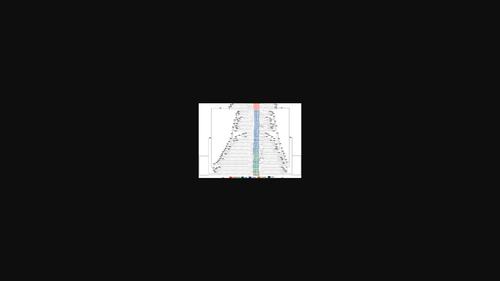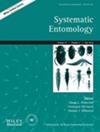Delimiting continuity: Comparison of target enrichment and double digest restriction‐site associated DNA sequencing for delineating admixing parapatric Melitaea butterflies
IF 4.7
1区 农林科学
Q1 ENTOMOLOGY
引用次数: 2
Abstract
Parapatrically distributed taxa pose a challenge for species delimitation due to the presence of gene flow and inherent arbitrariness of exactly defining the species boundaries in such systems. We tackled the problem of species delimitation in a parapatric species pair of Melitaea butterflies using two popular genomic methods—double digest restriction‐site associated DNA sequencing (ddRAD) and target enrichment. We compared newly generated target enrichment dataset with 1733 loci to the already available ddRAD data from a previous study on the same set of specimens using a suite of phylogenetic, population genetic, and species delimitation methods. We recovered consistent phylogenetic relationships across the datasets, both demonstrating the presence of a genetically distinct Balkan lineage and paraphyly of Melitaea athalia with respect to Melitaea celadussa. Population genetic STRUCTURE analyses supported the presence of two species when using ddRAD data, but three species when using target enrichment, while a Bayes factor delimitation analysis found both two and three species scenarios equally decisive in both datasets. As the results obtained from both methods were largely congruent, we discuss some practical considerations and benefits of target enrichment over RAD sequencing. We conclude that the choice of method of genomic data collection does not influence the results of phylogenetic analyses at alpha taxonomic level, given a sufficient number of loci. Finally, we recommend a solution for delineating species in parapatric scenarios by proposing that parapatric taxa be consistently classified as subspecies or complete species, but not both, to promote taxonomic stability.

划定连续性:目标富集和双消化限制位点相关DNA测序的比较,用于划定混合准蝶
由于基因流的存在和物种边界精确界定的随意性,准地理分布的分类群给物种划分带来了挑战。本文采用两种常用的基因组学方法——双消化限制位点相关DNA测序(ddRAD)和靶标富集方法,研究了双消化限制位点相关DNA测序(ddRAD)对Melitaea butterflies的物种划分问题。我们使用一套系统发育、群体遗传学和物种划分方法,将新生成的含有1733个位点的目标富集数据集与先前对同一组标本的研究中已有的ddRAD数据进行了比较。我们在数据集中恢复了一致的系统发育关系,既证明了遗传上独特的巴尔干血统的存在,也证明了相对于celadussa的Melitaea athalia的部分存在。群体遗传结构分析表明,在ddRAD数据中存在2个物种,而在目标富集数据中存在3个物种,而贝叶斯因子划分分析发现,在两个数据集中,2种和3种情景同样具有决定性。由于两种方法获得的结果在很大程度上是一致的,我们讨论了一些实际考虑因素和目标富集相对于RAD测序的好处。我们得出结论,如果有足够数量的基因座,基因组数据收集方法的选择不会影响α分类水平的系统发育分析结果。最后,我们提出了一种解决方案,即在类群划分中应将类群划分为亚种或完全种,而不是两者都划分,以促进分类的稳定性。
本文章由计算机程序翻译,如有差异,请以英文原文为准。
求助全文
约1分钟内获得全文
求助全文
来源期刊

Systematic Entomology
生物-进化生物学
CiteScore
10.50
自引率
8.30%
发文量
49
审稿时长
>12 weeks
期刊介绍:
Systematic Entomology publishes original papers on insect systematics, phylogenetics and integrative taxonomy, with a preference for general interest papers of broad biological, evolutionary or zoogeographical relevance.
 求助内容:
求助内容: 应助结果提醒方式:
应助结果提醒方式:


